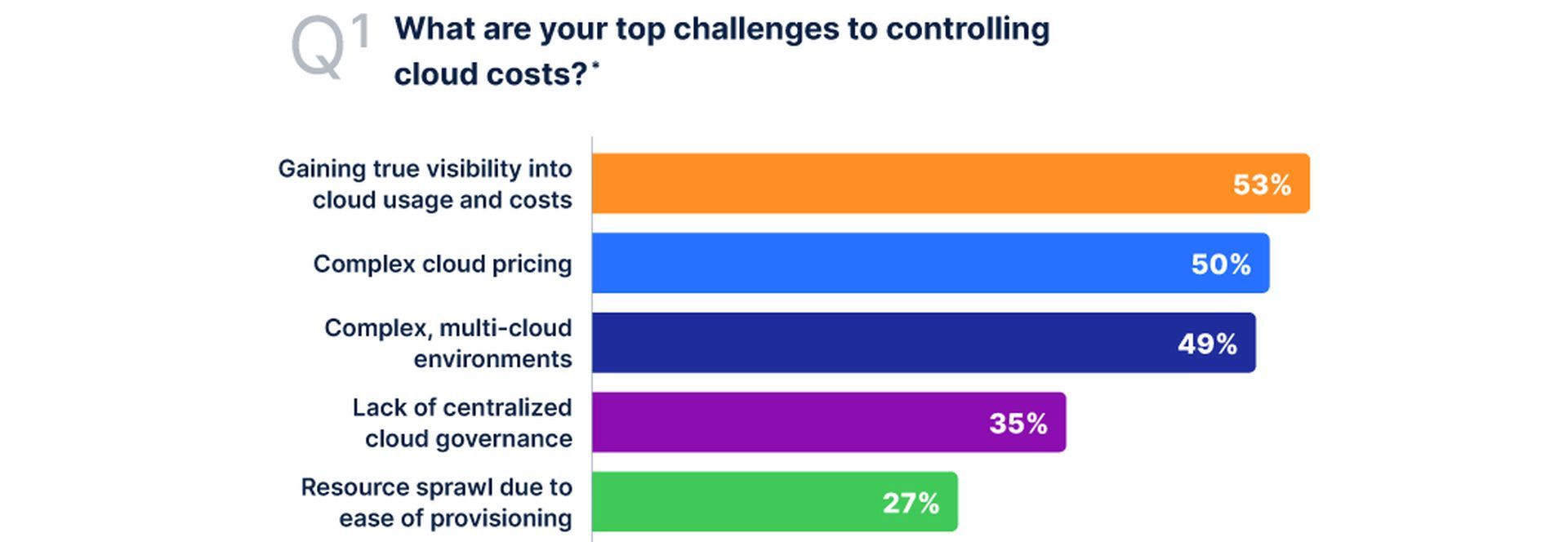- Rising cloud costs are causing problems for the IT industry.
- The total amount of cloud investment will reach $544 billion this year, up 21% from last year, predicts the latest study published by Gartner in February.
- Gartner predicts that by 2025, cloud spending will overtake on-premises spending ($775 billion this year), which is now trailing with $917 billion in projected cloud expenditures.
- 88% of IT decision-makers believe that the cloud is the “cornerstone of [their] digital strategy,” according to a recent Deloitte survey.
The IT industry is going through troubled times due to rising cloud costs. Advanced analytics, artificial intelligence, and IT as a whole have all been transformed by the cloud. Businesses today have access to nearly infinite storage and computing capabilities for processing enormous datasets and developing machine learning models. But surprisingly, cloud costs are now becoming a challenge for firms.
Cloud costs are skyrocketing
According to recent research released by Gartner in February, overall cloud investment will reach $544 billion this year, up 21% from the previous year. By 2025, when Gartner expects $917 billion will be spent on the cloud, cloud expenditure will surpass on-prem spending, which is now trailing ($775 billion this year).
It is obvious that the big cloud providers are consuming a huge amount of workload. With a combined market valuation of more than $4.5 trillion, the three main public cloud providers—AWS, Google Cloud, and Microsoft Azure—are three of the five largest firms in the world. (Apple and Saudi Aramco, with a combined additional $4.5 trillion, are the only larger companies.)
This widespread transition to the shared computing model favors more than just cloud service providers. Companies expedited the retirement of on-premise data centers during COVID-19, maintaining the necessary social distance.

Beyond that, though, the accessibility of state-of-the-art innovation in the cloud is also assisting clients in getting a solid return on their cloud expenditures. According to a recent survey conducted by Deloitte, 88% of IT decision-makers see the cloud as the “cornerstone of [their] digital strategy.”
The Virginia-based credit card company Capital One is one business that has invested heavily in the cloud. Capital One has been transferring data to the cloud for years. It recently finished the project by migrating its on-premises Teradata data warehouse to an AWS-hosted Snowflake warehouse.
Salim Syed, vice president and head of engineering at Capital One Software, claims that while switching from Teradata to Snowflake eventually allowed thousands of Capital One customers to process millions of queries, the improved scalability had some unexpected effects.

There are other businesses with that kind of expertise besides Capital One. According to a recent Gartner report, cloud costs for businesses are usually two to three times higher than anticipated. Additionally, it was discovered that up to 80% of businesses routinely pay more on IaaS than anticipated.
Teradata CTO Stephen Brobst highlighted a different analyst study that found that in the first 18 months after cloud deployment, 80% of companies utilizing data warehousing technologies went over budget by more than 50%. “This is a very unpleasant discussion to have with your CFO,” he stated.
IT leaders will boost their cloud adoption strategies over the next 2 years
Although resources like CPU, I/O, and storage are basically limitless in the cloud, this is no justification for ceasing to manage resource consumption, as Brobst accuses rival data warehousing suppliers of doing.
Teradata has changed its strategy to the cloud, which now accounts for the largest chunk of new customer income, while also maintaining its customers’ on-premise warehouses. The new cloud data lake service that Teradata revealed last week has Snowflake as its primary rival in its market.

Anodot, a digital company that creates corporate monitoring software based on machine learning and AI, is another one that is biting into the cloud cost apple. According to the recently issued 2022 State of Cloud Cost Report, 54% of businesses say that their biggest cause of cloud waste is a lack of insight into cloud usage, and 49% of enterprises find it difficult to control cloud expenses.
Using data to bring down healthcare costs
Key takeaways from the report:
- 37% reported being taken aback by their cloud charges or experiencing an event involving cloud costs.
- Gaining accurate insight into cloud usage and expenses is cited as the main problem by more than half (53%). In contrast, complex cloud pricing and complex, multi-cloud settings are cited by 50% and 49%, respectively.
- More than a quarter (28%) of respondents still take weeks or months to detect an increase in cloud costs, a statistic that hasn’t changed since 2021.
According to David Drai, CEO and co-founder of Anodot, customers going to the cloud should use AI and machine learning to monitor their cloud resources better.

“Shifting to the cloud requires a delicate balance between the speed of workload migration and cost control. Today, cloud cost management – which is all the more crucial as businesses strive to mitigate wasted resources and shore up revenues – should be based on four key elements: visibility, insights, recommendations, and automated actions. Enterprises leveraging AI and ML to control and optimize their cloud environments are seeing immediate results and reduced waste, unlocking the true value the cloud has always promised,” Drai stated.






